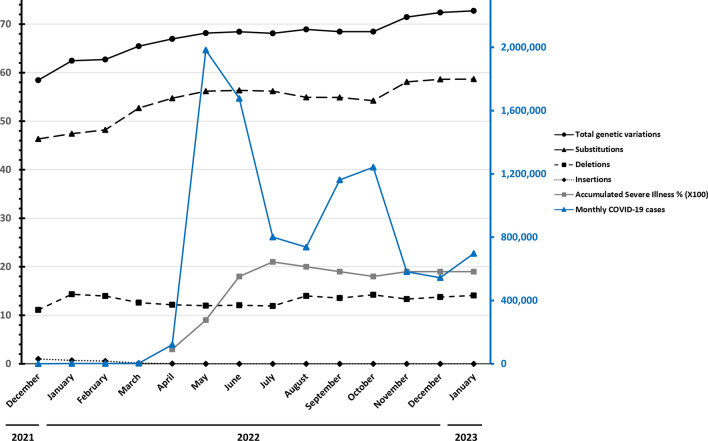Correction to: Scientific Reports 10.1038/s41598-023-43357-7, published online 03 October 2023
The original version of this Article contained errors in Figure 5 where the legends for the genetic variation frequencies in the spike protein and the Y-axis label were incorrect. The original Figure 5 and accompanying legend appear below.
Fig. 5.
Monthly data on genetic variation frequencies in the spike protein, illness, and COVID-19 cases between December 2021 and January 2023 in Taiwan. The percentage of illness is the original data multiplied by 100 for presentation. Data source: GISAID https://gisaid.org/ and Taiwan CDC https://nidss.cdc.gov.tw/nndss/disease?id=19CoV.
In addition, in the Discussion section,
Their results might explain why BA.2.3.7 rapidly replaced BA.1 and BA.1.1 from April 2020 to September 2022 until BA.5.1 entered Taiwan in August 2022 and dominated in October 2022.
now reads:
Their results might explain why BA.2.3.7 rapidly replaced BA.1 and BA.1.1 from April 2022 to September 2022 until BA.5.1 entered Taiwan in August 2022 and dominated in October 2022.
The original Article has been corrected.



